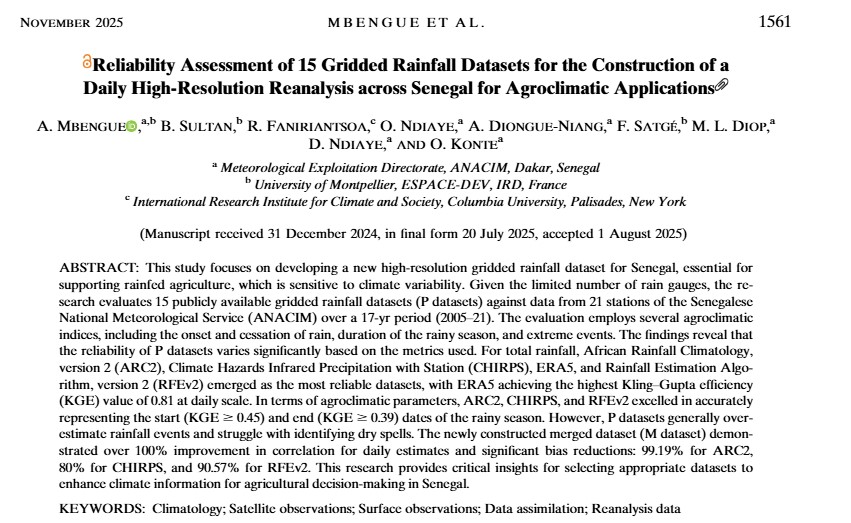ABSTRACT
This study focuses on developing a new high-resolution gridded rainfall dataset for Senegal, essential for supporting rainfed agriculture, which is sensitive to climate variability. Given the limited number of rain gauges, the research evaluates 15 publicly available gridded rainfall datasets (P datasets) against data from 21 stations of the Senegalese National Meteorological Service (ANACIM) over a 17-yr period (2005–21). The evaluation employs several agroclimatic indices, including the onset and cessation of rain, duration of the rainy season, and extreme events. The findings reveal that the reliability of P datasets varies significantly based on the metrics used. For total rainfall, African Rainfall Climatology, version 2 (ARC2), Climate Hazards Infrared Precipitation with Station (CHIRPS), ERA5, and Rainfall Estimation Algorithm, version 2 (RFEv2) emerged as the most reliable datasets, with ERA5 achieving the highest Kling–Gupta efficiency (KGE) value of 0.81 at daily scale. In terms of agroclimatic parameters, ARC2, CHIRPS, and RFEv2 excelled in accurately representing the start (KGE ≥ 0.45) and end (KGE ≥ 0.39) dates of the rainy season. However, P datasets generally overestimate rainfall events and struggle with identifying dry spells. The newly constructed merged dataset (M dataset) demonstrated over 100% improvement in correlation for daily estimates and significant bias reductions: 99.19% for ARC2, 80% for CHIRPS, and 90.57% for RFEv2. This research provides critical insights for selecting appropriate datasets to enhance climate information for agricultural decision-making in Senegal.
